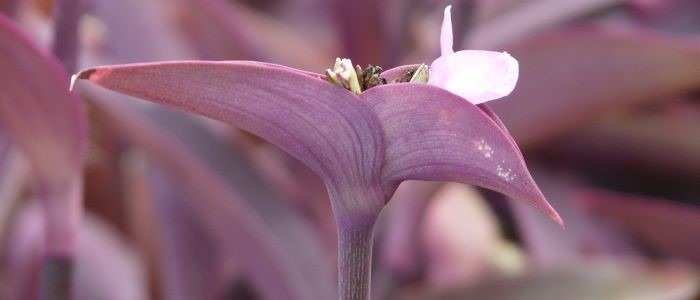If you’re looking for an eye-catching plant to add a splash of color to your garden, purple fountain grass is an excellent choice. This ornamental perennial is low-maintenance and hardy enough to withstand hot and cold climates alike. With its stunning purple foliage, it can create a dramatic look for any outdoor space.
Purple fountain grass is also drought-tolerant and doesn’t require frequent watering. This makes it an ideal choice for those who are short on time or don’t have access to consistent water sources. In addition, this type of grass requires minimal pruning, making it easy to keep up with regular maintenance.
One of the biggest advantages of growing purple fountain grass is that it is less likely to attract diseases or infestations. So you won’t have to worry about dealing with any costly problems in the future.
With the right knowledge and care, readers can enjoy a beautiful and low-maintenance addition to their garden when they grow purple fountain grass. Its vibrant foliage will create a stunning focal point in any outdoor space. While its low-maintenance qualities make it easy to keep up with regular maintenance.

Purple Fountain Grass Frequently Asked Questions
Is purple fountain grass easy to grow?
Yes, purple fountain grass is relatively easy to grow as long as it is provided with the right conditions. It prefers full sun and well-drained soil, and regular watering is necessary to keep the soil consistently moist. However, it is a hardy plant that can tolerate some drought conditions. With proper care and maintenance, purple fountain grass can thrive and add beautiful color and texture to outdoor gardens or landscapes.
Is the purple fountain grass drought-tolerant?
Yes, purple fountain grass is known for its drought tolerance. Although it prefers consistent moisture, it can withstand periods of dryness and still maintain its vibrant color and texture. This makes it a great choice for regions with hot and arid climates where water conservation is important. However, during extended periods of drought, it is recommended to provide some additional watering to ensure the health and vitality of the plant.
Choosing the Right Spot for Purple Fountain Grass
Finding the right spot for planting purple fountain grass is an important part of ensuring its health and growth. Here are a few key considerations when choosing a location.
Light: Purple fountain grass needs at least 6 hours of direct sunlight per day to thrive. So it’s important to select an area that offers plenty of sun exposure. Generally, this means planting in a south-facing spot to maximize the amount of sunlight received during the day.
Soil drainage: Purple fountain grass needs well-drained soil to prevent root rot and other fungal diseases. Avoid areas where water may pool or stagnate after rain or irrigation, such as near downspouts and low spots in the garden.
Wind protection: Strong winds can damage young plants and cause foliage to dry out. It’s best to select an area that is sheltered from these elements. Planting near shrubs, trees, fences, or buildings can help block strong winds while still allowing enough light for the plant.
Space: Since purple fountain grass can spread out far and wide (up to 3 feet), make sure there is enough room for it to grow. Additionally, consider its height when selecting a location; some varieties can reach up to 4 feet tall!
With careful consideration of these factors, readers will be able to enjoy a beautiful and low-maintenance addition to their garden with purple fountain grass!
How to Care for Your Purple Fountain Grass
Caring for your purple fountain grass is essential to keep it healthy and looking its best. Watering should be done regularly, but not too often as this can cause root rot. During the growing season, water the plant enough so that the soil is moist but not soggy. In hot weather, you may need to water more often. Fertilizing is also important for keeping your fountain grass healthy. Use a balanced fertilizer once every two months during the growing season and follow instructions on how much to apply.
Pruning is recommended to maintain the size and shape of your purple fountain grass. Trim off any dead or damaged foliage throughout the year as needed. At the end of winter cut back any old stems that look brown or withered. In addition to pruning, it’s important to protect your purple fountain grass from extreme temperatures. This can be done by covering them with a frost blanket during cold spells or by moving them indoors if necessary.
With proper care and maintenance, readers can enjoy a beautiful and low-maintenance addition to their garden with their purple fountain grass.
How to Propagate Purple Fountain Grass
Propagating purple fountain grass is a great way to increase the beauty of your garden! To collect seeds from mature plants, wait until late summer or fall for the most viable results. Before planting indoors during winter, it’s important to soak the seeds for 24 hours and keep soil moist but not wet.
When seedlings reach 2-3 inches tall, they can then be transplanted outdoors into their permanent location.
For those with sterile varieties of purple fountain grass that don’t produce viable seeds, propagation through division may also be an option. This process involves taking a portion of an existing plant and replanting it in another spot.
If you plan and pay attention to detail, propagating purple fountain grass doesn’t have to be intimidating! Following these tips will help readers successfully propagate this beautiful species and enjoy its low-maintenance benefits in their gardens.
Common Issues With Purple Fountain Grass
Growing purple fountain grass can be a rewarding experience, but it is important to be aware of the potential risks and how to avoid them.
One of the most common issues with purple fountain grass is overwatering, which can lead to root rot.
When caring for this type of grass, it is important to remember that too much water can cause the roots to become waterlogged and suffocate. To avoid this, make sure you are not watering your plants more than once or twice a week; adjust your frequency depending on weather conditions and soil moisture levels.
Another issue that can arise when growing purple fountain grass is planting in too much shade. When selecting an area for your plant, make sure you choose a spot that gets at least six hours of direct sunlight per day. Inadequate sunlight will lead to fungal diseases such as powdery mildew.
Mature plants are also at risk of winterkill if temperatures drop below 10°F (-12°C). To protect your plants during the colder months, consider covering them with a frost blanket or moving them indoors until temperatures rise again.
Finally, keep an eye out for Japanese beetles or foliage discoloration due to too much nitrogen in the soil. To prevent these issues from occurring, use natural insect repellants rather than chemical pesticides and fertilize sparingly when necessary.
Conclusion
To sum it up, purple fountain grass is a great choice for those looking to add a beautiful and low-maintenance element to their garden. It takes 6 hours of direct sunlight every day, well-drained soil, and protection from extreme temperatures to thrive. Furthermore, regular pruning and fertilizing are important for maintaining the shape and size of the plant without risking root rot.
With this knowledge in hand, any gardener can confidently add this stunning plant to their outdoor space. Now that you’re armed with all the facts needed to successfully cultivate this grass – go out there and get planting!. We hope that today’s article has been helpful in providing an insight into growing purple fountain grass.













